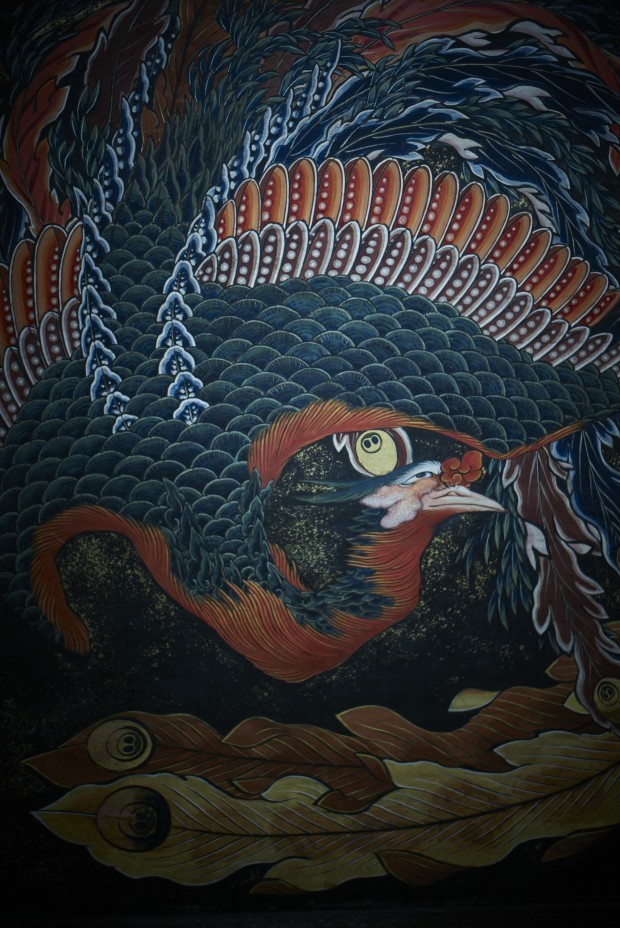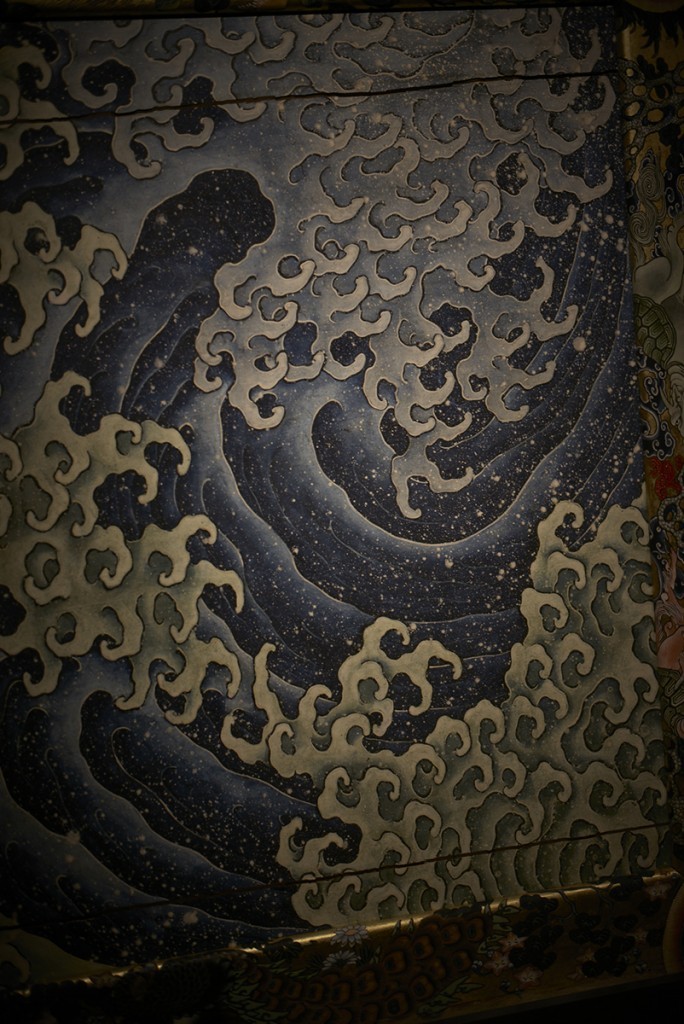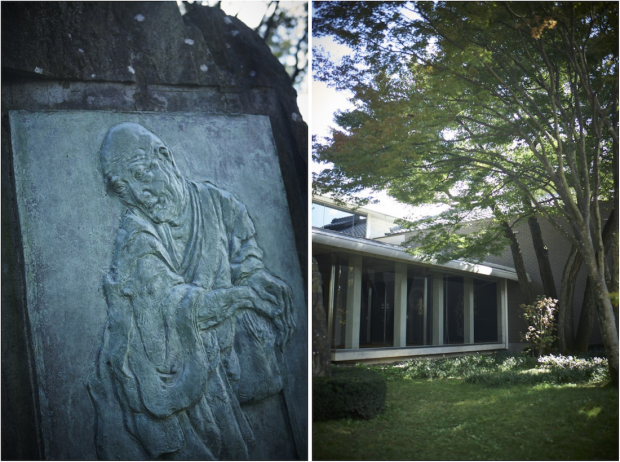Photographs by Hiroaki Shinohara.
A town filled with art by the great painter Hokusai
The Japanese artist 葛飾北斎 (Katsushika Hokusai, 1760-1849) maintained an avid interest in creating art well into his late eighties, producing the “Phoenix Staring in All Directions” ceiling painting at Gansho-in Temple when he was an impressive eighty-nine! This sight alone will convince you how interesting it would be to follow in Hokusai’s footsteps around the town of Obuse.
Hokusai-kan, a home in Obuse for Hokusai masterpieces
Next on your itinerary could be the art museum Hokusai-kan, whose collection focuses mainly on the nikuhitsuga (paintings similar in style to ukiyo-e woodblock prints) that Hokusai created here in Obuse. You can also see the festival float ceiling illustrations he painted on his second and third trips to Obuse.
At the end of the article, information about the Hokusai-kan is provided.
Hokusai visits Obuse again at 85, then again at 86, to adorn ceilings with festival floats
Long ago, during each year’s summer festival in Obuse, the various neighborhoods would each parade a float through the streets.
Hokusai spent six months in Obuse around age eighty-five, during which time he crafted these paintings—entitled “Dragon” and “Phoenix”—on the ceiling of the festival float from Higashimachi.
 The dragon ceiling painting from the Higashimachi festival float.
The dragon ceiling painting from the Higashimachi festival float.
The dragon is in flight against a burning red background, surrounded by billowing seas, while the phoenix is depicted in brilliant colors against a largely dark indigo background.
Hokusai’s brushwork in these two paintings gives hints of later works such as the ceiling mural of a phoenix whose eyes seem to follow you, “Happo Nirami Ho-o Zu” (Phoenix Staring in All Directions).
 The phoenix ceiling painting from the Higashimachi festival float. Thanks to the precise brush strokes, each is a bold and beautiful figure, and in a number of ways, the phoenix resembles Hokusai’s ceiling paintings in Gansho-in.
The phoenix ceiling painting from the Higashimachi festival float. Thanks to the precise brush strokes, each is a bold and beautiful figure, and in a number of ways, the phoenix resembles Hokusai’s ceiling paintings in Gansho-in.
Powerful waves full of expression
Hokusai returned to Obuse the following year, during which time he painted a pair of “angry waves” paintings on the Kanmachi festival float. Entitled “Onami”(Masculine Waves) and “Menami” (Feminine Waves), the two works reveal Hokusai’s truly impressive ability to depict huge breaking, billowing ocean waves.
The strength of Hokusai’s ocean waves here strongly reminds viewers of his internationally famous “Great Wave off Kanagawa,” also known as “Mount Fuji Seen below a Wave at Kanagawa,” and the detail and apparent depth of depiction give these angry waves in the nikuhitsuga style the power to pull the viewer right into the picture.
 The angry sea in Hokusai’s “Masculine Waves” (Onami) ceiling painting of the Kanmachi festival float. This festival float was commissioned by local merchant Takai Kozan, and Hokusai clearly enjoyed being asked to paint it.
The angry sea in Hokusai’s “Masculine Waves” (Onami) ceiling painting of the Kanmachi festival float. This festival float was commissioned by local merchant Takai Kozan, and Hokusai clearly enjoyed being asked to paint it.
The Kanmachi float also includes Hokusai’s only three-dimensional work, carved figures of two characters appearing in the classic Chinese novel Suikoden (Water Margin)—General Gongsun Sheng and a dragon called Yinglong. Hokusai is thought to have spent a year on the ceiling paintings and a full three years on the figures.
The ceiling paintings on the festival floats displayed at Hokusai-kan are reproductions, but the Kanmachi float’s original “Masculine Waves” and “Feminine Waves” are placed in front so that you can get a good look at them, as well as their border art, which is said to have been painted by Takai Kozan based on Hokusai’s working drawings. Takai was the person responsible for bringing Hokusai and Obuse together.
About the Hokusai-kan Museum
The Hokusai-kan Museum, opened in 1976, provides you a chance to enjoy the nikuhitsuga that engrossed Hokusai from age eighty. These ukiyo-e style paintings, along with the two festival floats and their ceiling paintings, and other Hokusai works, give you a broad perspective of his career in art. The special exhibitions on phases of his art are always well received, making the Hokusai-kan a must-visit stop on your itinerary in Obuse.
 At the entrance to the modern Hokusai-kan, you’re greeted by a relief version of a self-portrait of the artist.
At the entrance to the modern Hokusai-kan, you’re greeted by a relief version of a self-portrait of the artist.
The entrance fee for special exhibitions is 1,000 yen and the museum is located about a 10-minute walk from Nagano Electric Railway’s Obuse Station.












